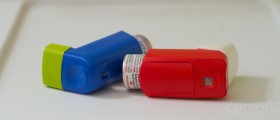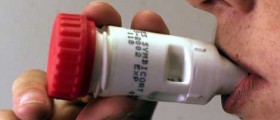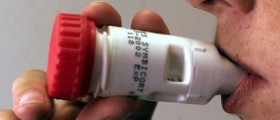Asthma guidelines for children and adults
Experts have thought of some asthma guidelines and several goal for the children to reach. Some of the goals are minimal or no chronic symptoms during either day or night, minimal or none at all exacerbations, no limitations on activities, minimal use of short-acting inhaled beta 2-agonist and minimal or no side effects from medications.
If the child did not reach these goals, there is a need for the parent to step up in the regime. First of all, a parent should determine the severity of asthma his or her child is suffering from. Secondly, a parent should review the preferred medications the child is using every day. If there is still no progress a parent should talk to a pediatrician.
Step 4 – severe persistent
Step four is when a child is having constant daytime symptoms or frequent nighttime symptoms. Also, the child's peak flows less than 60% of a child's personal best. If his or her daily peak flow measurements differ from one another more than 30%, then it is also a step four. Preferred daily medications should include high-dose inhaled corticosteroids along with long-acting inhaled beta 2-agonists. If a parent feels that there is a need or a pediatrician recommends it, corticosteroid tablets should be added as well.
Step 3 – moderate persistent
In step 3 the daily symptoms are there more than 1 night per week. In this step the peak flows from 60 to 80% of the child's personal best. Preferred daily medications should be a medium dose of inhaled corticosteroid and long-acting beta 2-agonists. There is also an alternative treatment possible and it consists of heightened inhaled corticosteroids. If a patient suffers from a recurring severe exacerbation, he or she should increase inhaled corticosteroids in the boundaries of medium-dose range along with long-acting inhaled beta 2-agonists.
Step 2 – mild persistent
In this step a patient experiences daytime symptoms more than two times per week but no more than one time per day. Peak flows are supposed to be more than or exactly 80% of the patient's best. Preferred daily medications should be a small dose of inhaled corticosteroids. When a person is on an alternative treatment, he or she should use cromolyn, leukotrite modifier or nedocromil.
Step 1 – mild intermittent
Daytime symptoms should not occur more than 2 days per week and nighttime symptoms should not appear more than 2 nights in a month. The variability in the daily peak flow measurements should be less than 20%. There is no need for daily medications.
There are also ways a patient can quickly relief the symptoms. A person may also need to step up on the treatment or step down. However, a parent should first talk to a pediatrician.


















Your thoughts on this
Loading...